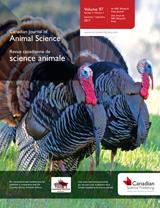In-transit losses (ITLs) of market weight pigs are defined as pigs that die and (or) pigs that become nonambulatory (NA) during the process of loading and shipping from the farm to the abattoir. Annual rates of transport mortalities are low relative to the number of pigs transported to slaughter annually but are highly variable between countries and even between abattoirs within countries. In-transit losses are not fully explained by the most commonly cited risk factors, such as environmental temperature, stocking density, and journey length and other risk factors must be considered. Low numbers of ITLs compared with the large number of pigs shipped each year imply that individual pig factors should be given greater consideration. Pig health pertaining to ITLs is not well studied and post mortems are rarely completed on ITL pigs. In particular, compromised cardiac function combined with a limited ability for cardiac compensation may predispose pigs to ITLs as a result of the exertion experienced during sorting, loading, and transport. Varying stages of cardiac compromise could explain the variable nature of ITLs. Future research should focus on investigating the health conditions which could make a pig more susceptible to death or becoming NA during transport.
How to translate text using browser tools
18 January 2017
Pig-level risk factors for in-transit losses in swine: a review
Kathy Zurbrigg,
Tony van Dreumel,
Max Rothschild,
David Alves,
Robert Friendship,
Terri O’Sullivan
ACCESS THE FULL ARTICLE
It is not available for individual sale.
This article is only available to subscribers.
It is not available for individual sale.
It is not available for individual sale.
en transit
in-transit
losses
mortalités
mortalities
non ambulatoire
nonambulatory





